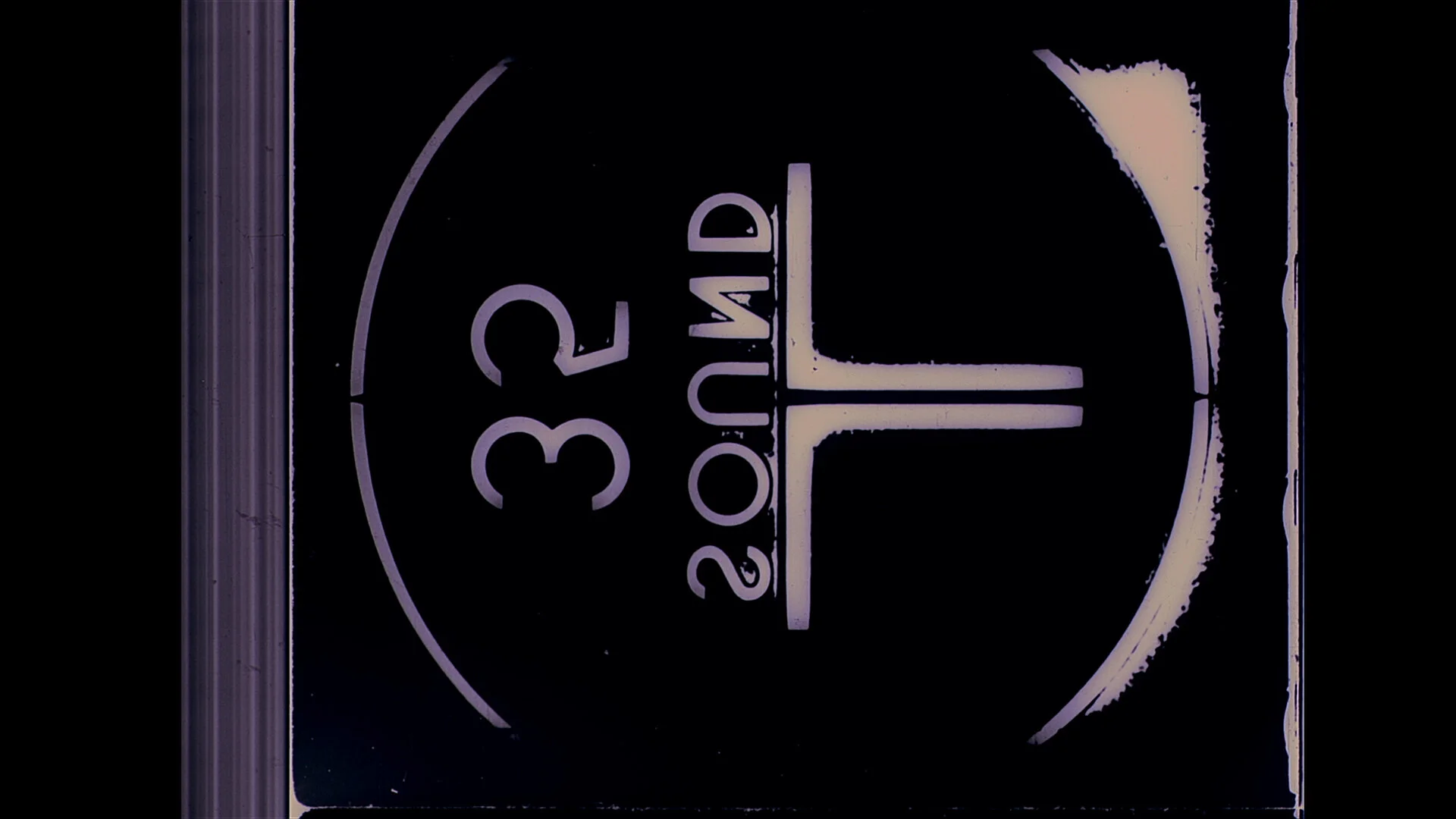옵티컬 사운드 Optical Sound_엘케 그로엔 & 크리스티안 뉴바허 Elke Groen & Christian Neubacher
옵티컬 사운드 Optical Sound_엘케 그로엔 & 크리스티안 뉴바허 Elke Groen & Christian Neubacher
Austria / 2014 / Color / Sound / 12min / 35mm to HD
Description
옵티컬 사운드는 전통적인 파운드 푸티지 작품으로 35mm 오프닝 크레디트의 수백 개의 파편으로 구성되었다. 모든 배급용 프린트의 시작에 등장하는 카운트다운 리더와 35mm 필름 스트립 위의 왼쪽 측면에 검정 바탕 위에 음성 파형이 그려진 수직의 옵티컬 사운드의 영역은 극장의 관객에게는 비가시적 영역에 속하는 것이다. 특별한 어쿠스틱 센서가 이러한 시각적 정보를 영화의 사운드로 번역하는 것이다. <옵티컬 사운드>는 시각적인 영역으로 옮겨 갔던 이런 타입의 사운드트랙에 대한 오마주다. 이는 또한 이미지를 보여주지만 동시에 들을 수도 있다. 관습적인 제작 과정에서 음악은 이미지 시퀀스에 수반되는 것이지만, 여기선 반대다. 사운드가 지배적이고, 빛이 이에 수반된다.
두 영화감독은 음악가인 지크프리트 프리드리히를 초청해, 오프닝 크레디트를 모은 어쿠스틱 재료로 사운드를 만들었다. 이러한 사운드가 그의 작곡의 기초가 되었지만, 여기에 함께하는 이미지는 다소 임의적 추가일 뿐이다. 이미지와 사운드를 동조하기 위해 사용하는 싱크 톤이나 다른 노이즈 등이 사용되었고 이는 필름의 물질적 훼손에 의해 변한 것이다. 프리드리히는 이들을 조합해 다다이스트적 스코어를 구성했다. 여러 사운드 중에서 특히 강력한 것은 관객에게 알아들을 수 없는 메시지를 반복적으로 전달하는 행복한 소녀의 목소리다. 스타카토적 특성은 시각적인 측면에서도 나타난다. 숫자, 글자, 테스트 패턴과 먼지, 긁힌 색의 영역이 빠르게 연이어 나타난다. 시네마가 디지털이 된 시대에 모든 옵티컬 사운드트랙은 역사가가 되었다. 두 감독은 다시 한번 아날로그 필름에 활력을 불어넣고, 영화의 본질인 빛과 사운드를 시대를 초월한 서정적 콜라주로 기념한다.(노르베르트 파펜비흘러)
Optical Sound is a classic found-footage work comprising hundreds of fragments of opening credits from 35mm films. The countdown which appears at the beginning of every release print is normally withheld from the viewing audience. Also not visible is the narrow, vertical optical soundtrack on the left edge of 35mm film strips, which involves black, symmetric wave shapes on a transparent background. A special acoustic sensor translates this visual information back into sound in a cinema. Optical Sound is an homage to this type of soundtrack, which was moved to the visible area. This also shows what can be heard simultaneously. The conventional production process, in which musical accompaniment added to sequences of images, was reversed: The sound serves as the dominant, and the light follows.
The two filmmakers invited the musician Siegfried Friedrich to work with the acoustic material in their substantial archive of opening credits. The sound alone provided the foundation for his compositions, and the accompanying images were more or less arbitrary additions. Using sync tones and other noises such as beeps and crackling, and static caused by wear and physical changes to the soundtrack, Friedrich constructed a collage to create a furious, dadaist score. Especially powerful are snatches of a happy girl’s voice, which directs unintelligible messages at the audience repeatedly. The staccato character is also manifested in the visuals: Numbers, letters, test patterns and dusty, scratched color fields appear in rapid succession.
In an era when cinema has gone digital once and for all and the optical soundtrack is history, Groen and Neubacher once again give life to analogue film material. Light and sound — the essences of cinema — are celebrated in this timeless, lyric collage. (Norbert Pfaffenbichler)

